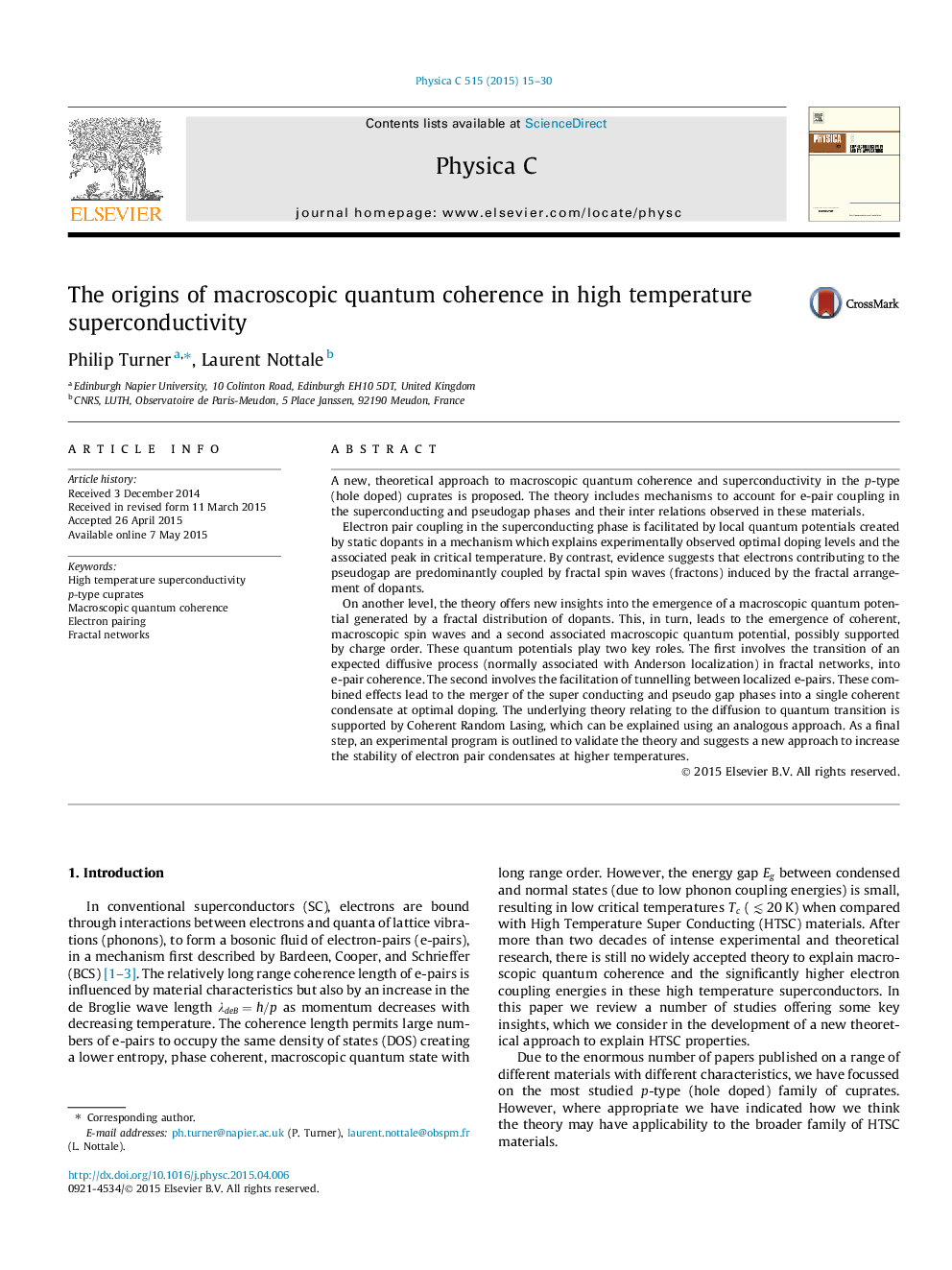| Article ID | Journal | Published Year | Pages | File Type |
|---|---|---|---|---|
| 1817528 | Physica C: Superconductivity and its Applications | 2015 | 16 Pages |
•We propose a new theoretical approach to superconductivity in p-type cuprates.•Electron pairing mechanisms in the superconducting and pseudogap phases are proposed.•A scale free network of dopants is key to macroscopic quantum coherence.
A new, theoretical approach to macroscopic quantum coherence and superconductivity in the p-type (hole doped) cuprates is proposed. The theory includes mechanisms to account for e-pair coupling in the superconducting and pseudogap phases and their inter relations observed in these materials.Electron pair coupling in the superconducting phase is facilitated by local quantum potentials created by static dopants in a mechanism which explains experimentally observed optimal doping levels and the associated peak in critical temperature. By contrast, evidence suggests that electrons contributing to the pseudogap are predominantly coupled by fractal spin waves (fractons) induced by the fractal arrangement of dopants.On another level, the theory offers new insights into the emergence of a macroscopic quantum potential generated by a fractal distribution of dopants. This, in turn, leads to the emergence of coherent, macroscopic spin waves and a second associated macroscopic quantum potential, possibly supported by charge order. These quantum potentials play two key roles. The first involves the transition of an expected diffusive process (normally associated with Anderson localization) in fractal networks, into e-pair coherence. The second involves the facilitation of tunnelling between localized e-pairs. These combined effects lead to the merger of the super conducting and pseudo gap phases into a single coherent condensate at optimal doping. The underlying theory relating to the diffusion to quantum transition is supported by Coherent Random Lasing, which can be explained using an analogous approach. As a final step, an experimental program is outlined to validate the theory and suggests a new approach to increase the stability of electron pair condensates at higher temperatures.
